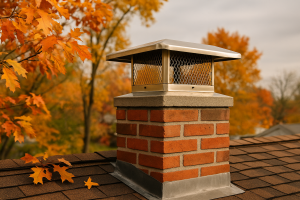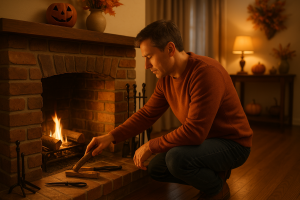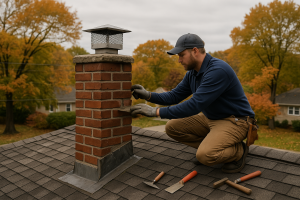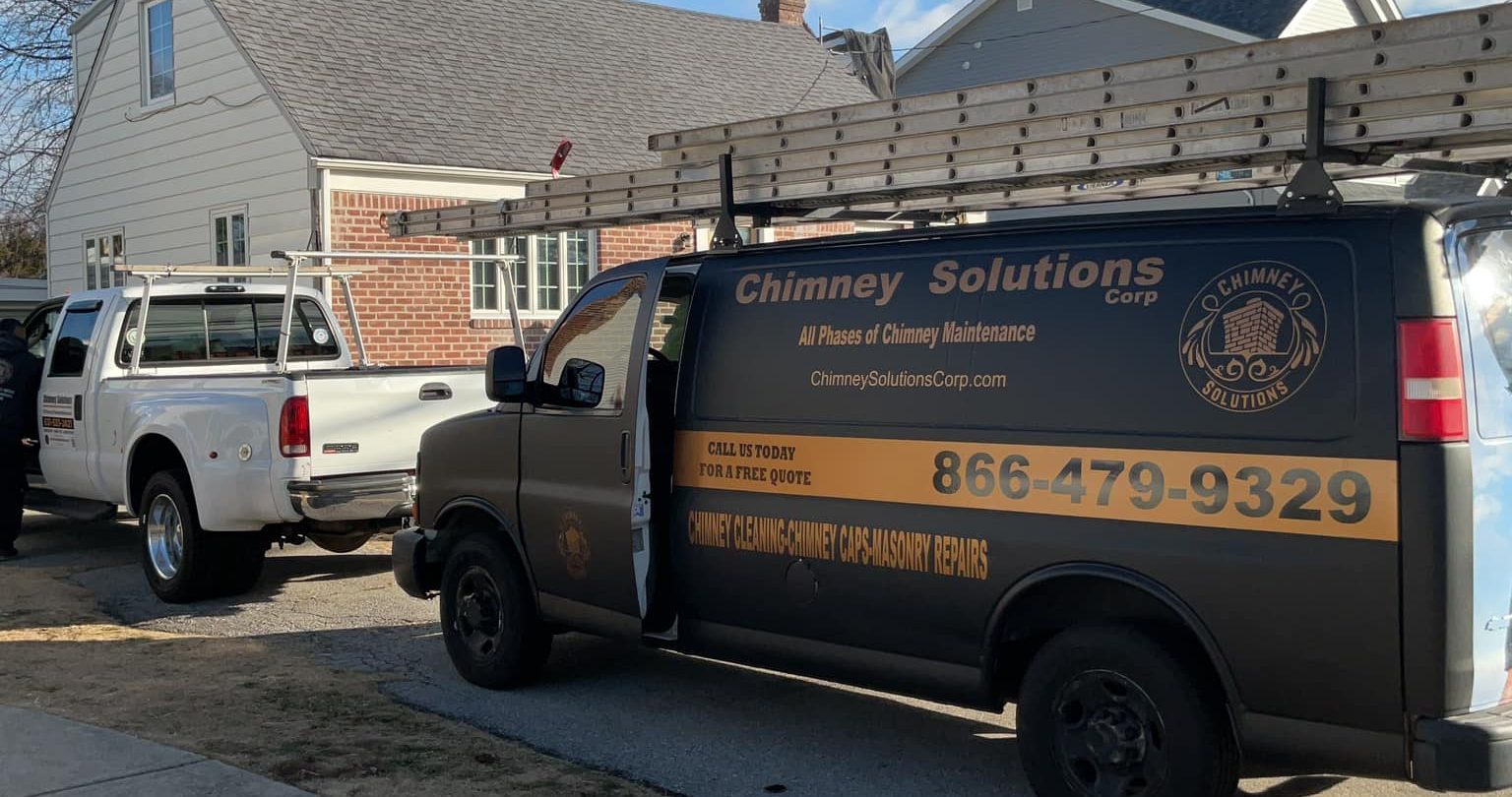Understanding the Chimney Lining Process for Commercial Properties
A properly functioning chimney system is a critical component of any commercial building that uses fireplaces, furnaces, or boilers. At the heart of that system lies a crucial yet often overlooked part: the chimney liner. Whether you’re a property manager, a facility operator, or a business owner, understanding the chimney lining process is key to maintaining safety, energy efficiency, and compliance with modern safety standards.
In this article, we’ll walk you through the entire chimney lining process, its significance in commercial properties, the various types of chimney liners, and how regular inspections and professional installation can prevent costly repairs and health risks.
What Is a Chimney Liner and Why Does It Matter?
A chimney liner is a protective barrier installed inside the chimney flue to direct combustion gases, toxic fumes, and heat safely out of the building. In commercial chimneys, where usage is more intense and the stakes higher, this liner is essential in:
- Protecting chimney walls from corrosive byproducts
- Preventing the transfer of extreme heat to surrounding combustible materials
- Containing dangerous gases like carbon monoxide, sulfur dioxide, and acidic byproducts
According to the Chimney Safety Institute of America (CSIA), damaged or missing liners are one of the leading causes of chimney fires and structural issues.
The Primary Function of Chimney Liners in Commercial Buildings
The primary function of a liner is to ensure a safe and efficient exhaust route for combustion products. In commercial buildings, this is even more vital because:
- There are higher volumes of combustion byproducts
- Equipment such as oil furnaces or gas appliances must vent properly
- Building occupants rely on safe indoor air quality
Without a proper liner, toxic and corrosive gases can escape into the building, posing health hazards and leading to extensive structural damage.
Types of Chimney Liners Used in Commercial Properties
There are several types of chimney liners used depending on the fuel type, chimney structure, and building code requirements:
1. Clay Tile Liners
Clay tiles or clay flue liners are among the most common materials in older commercial properties. While affordable and heat resistant, they are prone to cracking and are not ideal for venting modern appliances.
2. Metal Liners (Stainless Steel)
Stainless steel liners are highly durable and preferred for commercial chimney relining. They can withstand harsh conditions, resist corrosive byproducts, and adapt well to straight chimneys and multi-story buildings.
3. Cast-in-Place Liners
These liners use a cement-like material poured inside the flue. They’re great for reinforcing masonry chimneys and restoring compromised liners.
4. Thermocrete Liners
Used in Commercial Thermocrete Chimney Lining Services, these ceramic liners offer a seamless, smooth surface that’s resistant to toxic gas leaks, water infiltration, and heat damage.
Signs That a Chimney Needs Relining
Routine visual assessments and professional chimney inspections help identify whether a commercial chimney needs relining. Common signs include:
- Visible cracks or spalling in mortar chimney joints
- Corrosion on metal liners
- Evidence of water damage or water vapor staining
- Poor draft or smoke spillage
- Foul odors indicating acidic byproducts or combustion gas leaks
- Excessive buildup of soot or creosote
Delaying these signs can result in extensive damage or even carbon monoxide poisoning.
The Chimney Lining Installation Process
Installing a chimney liner in a commercial property is more complex than in a residential property, requiring specialized tools, advanced techniques, and code compliance.
Step 1: Professional Inspection
A chimney technician will assess the current liner or flue structure using video scanning equipment to identify hidden issues and signs of deterioration.
Step 2: Sizing and Planning
Choosing a sized liner that matches the chimney’s dimensions and type of fuel used is crucial. The liner must allow optimal draft and efficient exhaust flow.
Step 3: Preparation
Old liner removal or debris clearing ensures minimal disruption and smooth installation. This step often requires scaffolding or special access equipment for industrial chimneys.
Step 4: Liner Installation
Based on the chosen liner type—rigid, flexible, or cast-in-place—the new liner is fitted with precision.
Step 5: Final Testing and Sealing
Technicians verify the liner’s integrity, check clearance to combustibles, and ensure a proper chimney crown seal to prevent water leaks.
Building Code Compliance and Commercial Chimneys
Chimney liners are not just a recommendation—they’re often a building code requirement. Especially in multi-story buildings, codes demand:
- Proper venting of modern appliances
- Regular inspections and documentation
- Use of approved liner materials
- Proper installation process to prevent combustible material exposure
Non-compliance could void insurance coverage or lead to penalties during real estate transactions.
The Role of Routine Inspections and Maintenance
Routine chimney inspections and proper maintenance are essential to preserving the integrity and performance of your commercial chimney liner. Over time, even the most heat-resistant and high-quality chimney liners—including Rigid liners, Clay liners, and Stainless Steel Chimney Liner Systems—can deteriorate due to exposure to harmful gases, toxic gases, combustion byproducts, and harsh conditions.
Chimney sweeps and certified professionals play a vital role in ensuring your system functions as it should. Their trained eyes and advanced tools help identify signs of damage early on, such as cracks in a brick chimney, corrosive buildup on a sized flue, or blockages near the chimney stack. Routine service also helps detect improper installation or deterioration in liners not designed for your type of fireplace, such as a wood-burning fireplace venting into an incompatible flue.
What Does Proper Maintenance Look Like?
Recommended care includes:
- Annual inspections by certified experts who follow the proper inspection process and provide detailed reports to property owners and facility managers.
- Prompt attention to chimney liner damage, including worn joints, deteriorated clay flue tile, or leaks near separate connector pipes or the Condition of connector.
- Regular cleaning to remove creosote, acidic byproducts, and other corrosive materials that threaten the vital components of your chimney.
- Seasonal evaluations before heavy usage—especially before harsh winters or after unexpected heat exposure—to minimize the risk of chimney fires and maintain safe chimney functions.
- Consideration of upgraded liners such as ProForm Chimney Lining or solutions offered by Industrial Thermocrete Chimney Lining Service, which may provide better compatibility with a wide range of commercial heating systems.
Whether you manage homes with chimneys, restaurants, schools, or large facilities with hot water heaters and furnace pipes, preventive maintenance ensures consistent draft, reduces energy consumption, and minimizes liability.
Choosing the right team—backed by Accreditations & Memberships from organizations like the Chimney Safety Institute of America—ensures your system remains up to code while extending the life of your investment. Tools such as video scanning, liner sizing for ease of installation, and upgrades to Commercial ProForm Chimney Lining Services are key to achieving long-term performance.
In short, regular upkeep is not just a recommendation—it’s a crucial role in protecting your building, reducing exposure to potential hazards, and optimizing the performance of your vent pipe and exhaust systems.
Common Issues from Improper or Damaged Liners
Improperly installed or deteriorating liners in commercial chimneys can lead to:
- Health hazards from gas leaks and poor indoor air quality
- Inefficient combustion process, increasing energy costs
- Structural breakdowns due to heat and water infiltration
- Violations during fire safety inspections
In severe cases, these issues can halt business operations due to safety violations or equipment failure.
Why Hire a Professional Chimney Service?
Hiring certified chimney professionals ensures:
- Accurate diagnosis using specialized equipment
- Proper installation in compliance with industry standards
- Access to custom solutions for different building needs
- Detailed inspection reports for property records
- Faster turnaround and minimal disruption to business
The Long-Term Benefits of Proper Chimney Lining
Investing in the right chimney liner and practicing regular maintenance provides more than just code compliance—it lays the foundation for long-term protection, efficiency, and cost savings in any commercial property.
- Enhanced safety and peace of mind knowing your building is protected from toxic gas leaks, carbon monoxide, and potential chimney fires.
- Lowered energy bills through improved draft hoods and optimal performance of heating systems, reducing unnecessary energy consumption.
- Reduced risk of extensive repairs by catching hidden damage, acidic byproducts, or deterioration early through routine inspections and visual assessments.
- Extended appliance lifespan by maintaining clean and efficient venting gas appliance systems, especially when using gas utility appliances or oil furnaces.
- Improved handling of combustion byproducts, such as water vapor, sulfur dioxide, and corrosive gases, which can deteriorate chimney walls and threaten indoor air quality if not properly managed.
- Greater adaptability to modern appliances and types of fuel, ensuring compatibility with today’s combustion process standards and proper draft requirements.
- Smoother service requests and easier documentation for real estate professionals, property managers, and insurance coverage reviews.
- Increased resistance to harsh weather conditions, corrosive byproducts, and structural issues—especially in masonry chimneys exposed to harsh winters.
Using durable materials like stainless steel liners or Thermocrete liners, installed with specialized tools by qualified professionals, ensures a smooth, hassle-free installation process with minimal disruption to daily operations.
In essence, choosing the right liner type, such as a flexible liner, ceramic liner, or cast-in-place option, delivers long-term safety, peak efficiency, and reduced liability—especially when backed by professional inspection and compliance with building codes.
Conclusion: Protect Your Commercial Property with Expert Chimney Lining
A damaged or outdated chimney liner poses serious safety hazards, invites costly repairs, and compromises the overall performance of your commercial chimney. Taking proactive steps to install the proper liner, maintain it with regular inspections, and address issues with timely repairs can make all the difference.
Whether you’re managing a multi-story building, industrial facility, or local business space, partnering with certified professionals ensures your chimney system remains in optimal condition and aligned with modern safety standards.
If you’re ready to take the next step toward securing your property, improving efficiency, and gaining true peace of mind, visit Chimney Solutions to request a consultation or learn more about our commercial chimney lining service



